I have an autoencoder and I need to add a Gaussian noise layer after my output. I need a custom layer to do this, but I really do not know how to produce it, I need to produce it using tensors.

what should I do if I want to implement the above equation in the call part of the following code?
class SaltAndPepper(Layer):
def __init__(self, ratio, **kwargs):
super(SaltAndPepper, self).__init__(**kwargs)
self.supports_masking = True
self.ratio = ratio
# the definition of the call method of custom layer
def call(self, inputs, training=None):
def noised():
shp = K.shape(inputs)[1:]
**what should I put here????**
return out
return K.in_train_phase(noised(), inputs, training=training)
def get_config(self):
config = {'ratio': self.ratio}
base_config = super(SaltAndPepper, self).get_config()
return dict(list(base_config.items()) + list(config.items()))
I also try to implement using lambda layer but it dose not work.